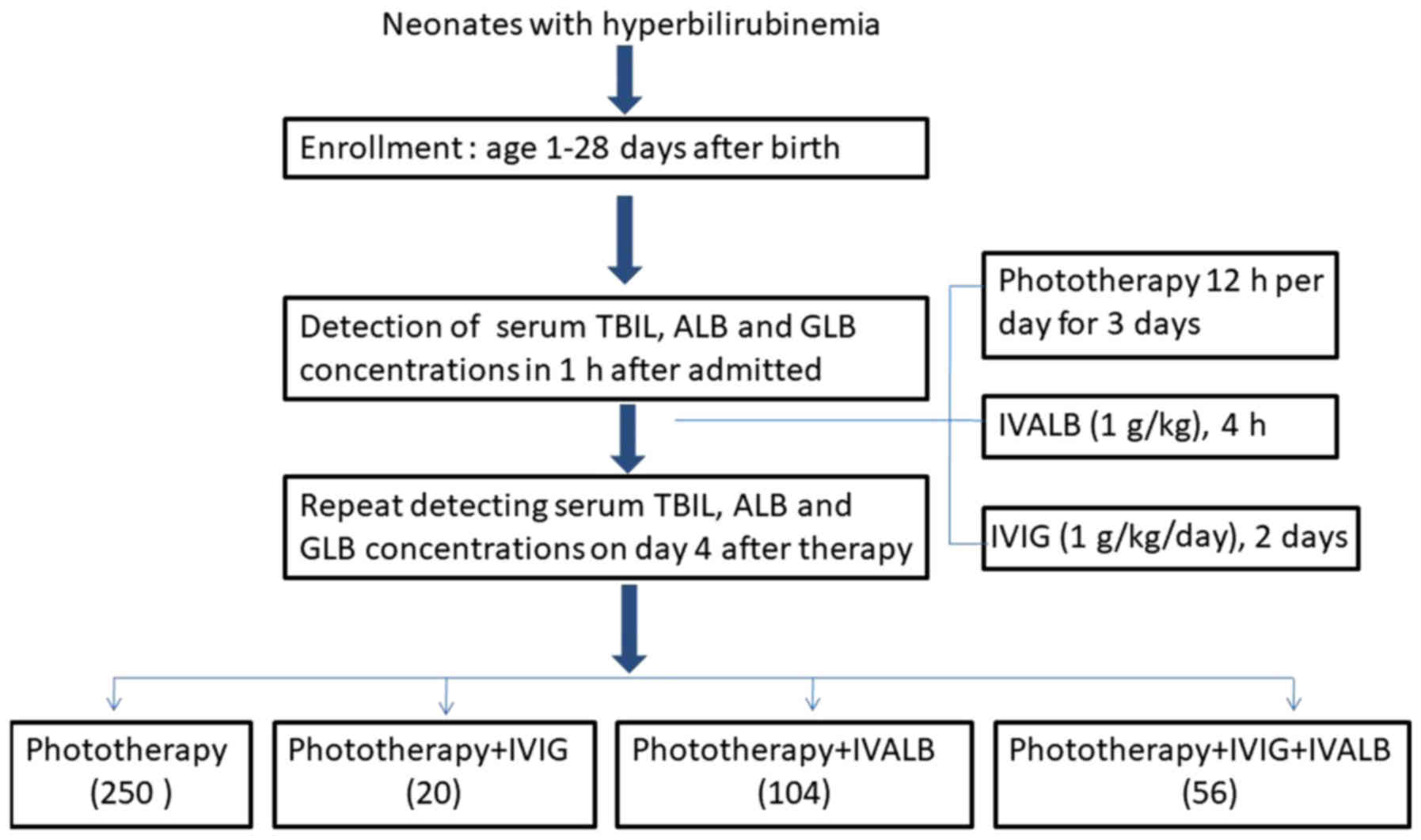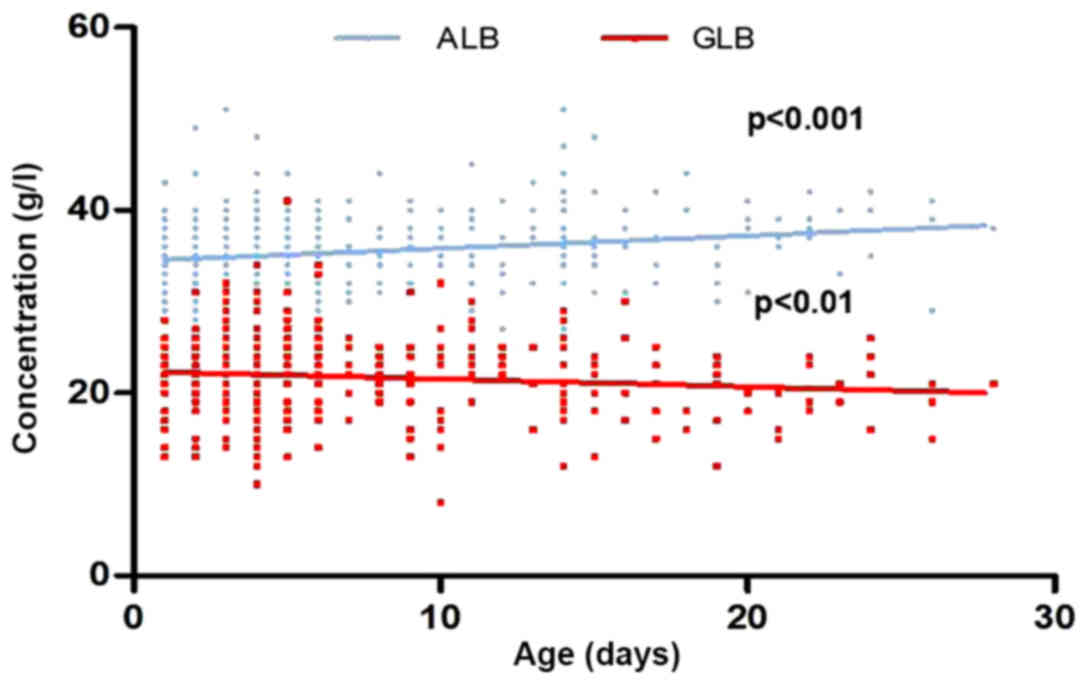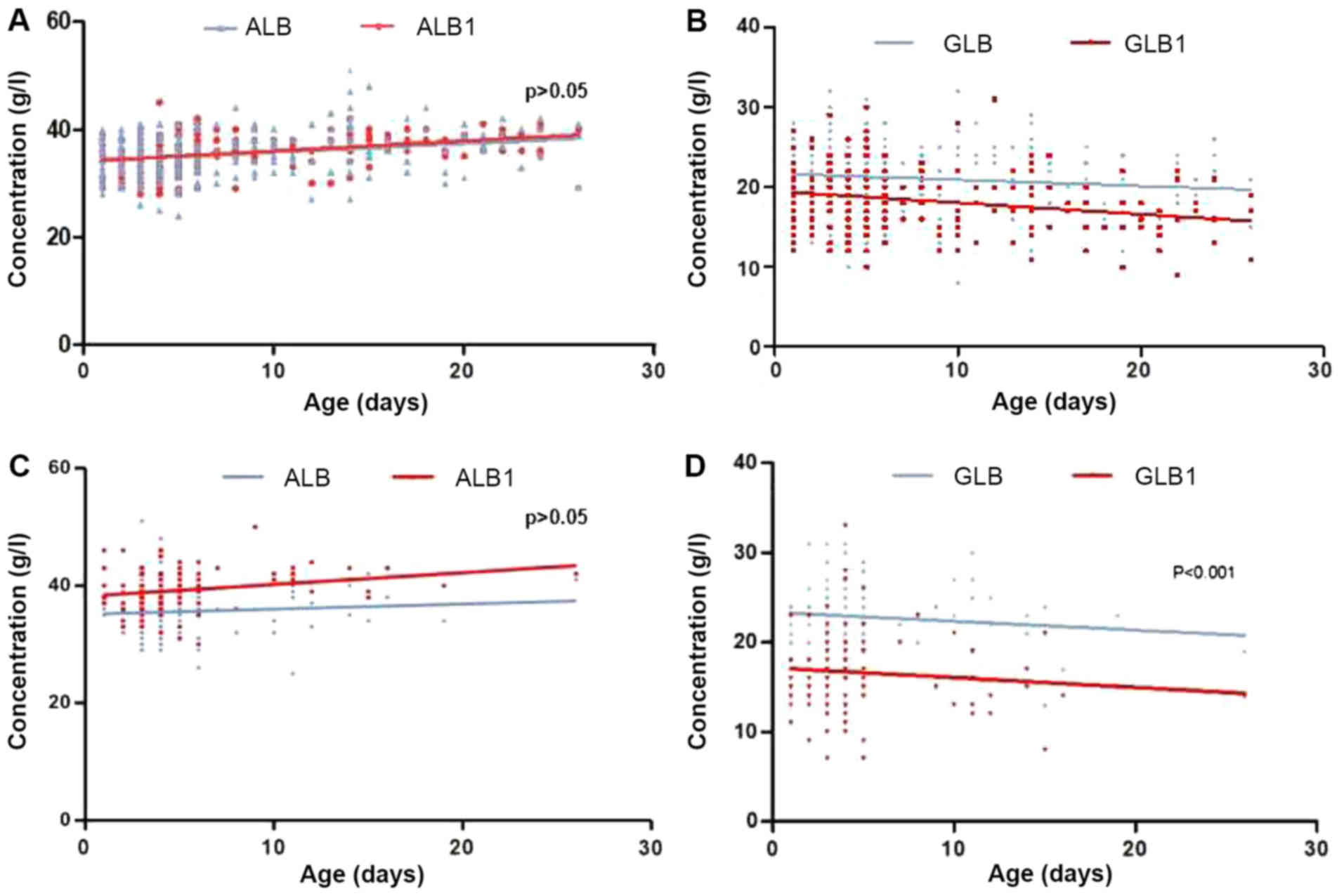|
1
|
American Academy of Pediatrics
Subcommittee on Hyperbilirubinemia: Management of
hyperbilirubinemia in the newborn infant 35 or more weeks of
gestation. Pediatrics. 114:297–316. 2004. View Article : Google Scholar : PubMed/NCBI
|
|
2
|
Rennie J, Burman-Roy S and Murphy MS:
Guideline Development Group: Neonatal jaundice: summary of NICE
guidance. BMJ. 340:c24092010. View Article : Google Scholar : PubMed/NCBI
|
|
3
|
Gamaleldin R, Iskander I, Seoud I, Aboraya
H, Aravkin A, Sampson PD and Wennberg RP: Risk factors for
neurotoxicity in newborns with severe neonatal hyperbilirubinemia.
Pediatrics. 128:e925–e931. 2011. View Article : Google Scholar : PubMed/NCBI
|
|
4
|
Hosono S, Ohno T, Kimoto H, Nagoshi R,
Shimizu M and Nozawa M: Effects of albumin infusion therapy on
total and unbound bilirubin values in term infants with intensive
phototherapy. Pediatr Int. 43:8–11. 2001. View Article : Google Scholar : PubMed/NCBI
|
|
5
|
Huizing K, Røislien J and Hansen T:
Intravenous immune globulin reduces the need for exchange
transfusions in Rhesus and AB0 incompatibility. Acta Paediatr.
97:1362–1365. 2008. View Article : Google Scholar : PubMed/NCBI
|
|
6
|
Hosono S, Ohno T, Kimoto H, Nagoshi R,
Shimizu M, Nozawa M and Harada K: Follow-up study of auditory
brainstem responses in infants with high unbound bilirubin levels
treated with albumin infusion therapy. Pediatr Int. 44:488–492.
2002. View Article : Google Scholar : PubMed/NCBI
|
|
7
|
Ahlfors CE and Wennberg RP:
Bilirubin-albumin binding and neonatal jaundice. Semin Perinatol.
28:334–339. 2004. View Article : Google Scholar : PubMed/NCBI
|
|
8
|
Yokota T, Morioka I, Kodera T, Morisawa T,
Sato I, Kawano S, Koda T, Matsuo K, Fujioka K, Morikawa S, et al:
Novel treatment strategy for Japanese newborns with high serum
unbound bilirubin. Pediatr Int. 55:54–59. 2013. View Article : Google Scholar : PubMed/NCBI
|
|
9
|
Xiong T, Chen H and Mu D: Effect of
pre-exchange albumin infusion on neonatal hyperbilirubinaemia and
long-term developmental outcomes. Cochrane Database of Systematic
Reviews. (2): Art. no. CD011001. 2014.
|
|
10
|
Khera S and Gupta R: Incidence of
thrombocytopenia following phototherapy in hyperbilirubinemic
neonates. Med J Armed Forces India. 67:329–332. 2011. View Article : Google Scholar : PubMed/NCBI
|
|
11
|
Huang L, Bao Y, Xu Z, Lei X, Chen Y, Zhang
Y and Zhang J: Neonatal bilirubin levels and childhood asthma in
the US Collaborative Perinatal Project, 1959–1965. Am J Epidemiol.
178:1691–1697. 2013. View Article : Google Scholar : PubMed/NCBI
|
|
12
|
Sun HL, Lue KH and Ku MS: Neonatal
jaundice is a risk factor for childhood allergic rhinitis: A
retrospective cohort study. Am J Rhinol Allergy. 27:192–196. 2013.
View Article : Google Scholar : PubMed/NCBI
|
|
13
|
Abourazzak S, Bouharrou A and Hida M:
Jaundice and urinary tract infection in neonates: Simple
coincidence or real consequence? Arch Pediatr. 20:974–978. 2013.(In
French). View Article : Google Scholar : PubMed/NCBI
|
|
14
|
Chang HY, Cheng KS, Liu YP, Hung HF and Fu
HW: Neonatal infected subgaleal hematoma: an unusual complication
of early-onset E. coli sepsis. Pediatr Neonatol. 56:126–128.
2013. View Article : Google Scholar : PubMed/NCBI
|
|
15
|
Andersen JT, Dalhus B, Cameron J, Daba MB,
Plumridge A, Evans L, Brennan SO, Gunnarsen KS, Bjørås M, Sleep D,
et al: Structure-based mutagenesis reveals the albumin-binding site
of the neonatal Fc receptor. Nat Commun. 3:610. 2012. View Article : Google Scholar : PubMed/NCBI
|
|
16
|
Maisels MJ and McDonagh AF: Phototherapy
for neonatal jaundice. N Engl J Med. 358:920–928. 2008. View Article : Google Scholar : PubMed/NCBI
|
|
17
|
Hyvarinen M, Zeltzer P, Oh W and Stiehm
ER: Influence of gestational age on serum levels of alpha-1
fetoprotein, IgG globulin, and albumin in newborn infants. J
Pediatr. 82:430–437. 1973. View Article : Google Scholar : PubMed/NCBI
|
|
18
|
Salimonu LS, Ladipo OA, Adeniran SO and
Osukoya BO: Serum immunoglobulin levels in normal, premature and
postmature newborns and their mothers. Int J Gynaecol Obstet.
16:119–123. 1978–1979. View Article : Google Scholar
|
|
19
|
Ballow M, Cates KL, Rowe JC, Goetz C and
Desbonnet C: Development of the immune system in very low birth
weight (less than 1500 g) premature infants: Concentrations of
plasma immunoglobulins and patterns of infections. Pediatr Res.
20:899–904. 1986. View Article : Google Scholar : PubMed/NCBI
|
|
20
|
Drossou V, Kanakoudi F, Diamanti E,
Tzimouli V, Konstantinidis T, Germenis A, Kremenopoulos G and
Katsougiannopoulos V: Concentrations of main serum opsonins in
early infancy. Arch Dis Child Fetal Neonatal Ed. 72:F172–F175.
1995. View Article : Google Scholar : PubMed/NCBI
|
|
21
|
Keller MA and Stiehm ER: Passive immunity
in prevention and treatment of infectious diseases. Clin Microbiol
Rev. 13:602–614. 2000. View Article : Google Scholar : PubMed/NCBI
|
|
22
|
Jafarzadeh M: mohammadzadeh A. Should
urine culture be considered in the hyperbilirubinemia workup of a
neonate. JCCM. 4:136–138. 2009.
|
|
23
|
Shahian M, Rashtian P and Kalani M:
Unexplained neonatal jaundice as an early diagnostic sign of
urinary tract infection. Int J Infect Dis. 16:e487–e490. 2012.
View Article : Google Scholar : PubMed/NCBI
|
|
24
|
Apaydin K, Ermis B, Arasli M, Tekin I and
Ankarali H: Cytokines in human milk and late-onset breast milk
jaundice. Pediatr Int. 54:801–805. 2012. View Article : Google Scholar : PubMed/NCBI
|
|
25
|
Eyada IK, El Saie AL, Ibrahem GA and Riad
NM: Effect of phototherapy on B and T lymphocytes in Egyptian
infants suffering from neonatal jaundice. Allergol Immunopathol
(Madr). 45:290–296. 2017. View Article : Google Scholar : PubMed/NCBI
|
|
26
|
Liu P, Li L, Fan P, Zheng J and Zhao D:
High-dose of intravenous immunoglobulin modulates immune tolerance
in premature infants. BMC Pediatr. 18:742018. View Article : Google Scholar : PubMed/NCBI
|
|
27
|
Chang RJ, Chou HC, Chang YH, Chen MH, Chen
CY, Hsieh WS and Tsao PN: Weight loss percentage prediction of
subsequent neonatal hyperbilirubinemia in exclusively breastfed
neonates. Pediatr Neonatol. 53:41–44. 2012. View Article : Google Scholar : PubMed/NCBI
|
|
28
|
El Sakka A, Imam SS, El Barbary M and
Ibrahium W: Does Type of Infant Feeding Affect Phototherapy for
Neonatal Hyperbilirubinemia? SAGE J. 4:334–339. 2012.
|
|
29
|
Cuperus FJ, Schreuder AB, van Imhoff DE,
Vitek L, Vanikova J, Konickova R, Ahlfors CE, Hulzebos CV and
Verkade HJ: Beyond plasma bilirubin: The effects of phototherapy
and albumin on brain bilirubin levels in Gunn rats. J Hepatol.
58:134–140. 2013. View Article : Google Scholar : PubMed/NCBI
|
|
30
|
Cohen RS, Wong RJ and Stevenson DK:
Understanding neonatal jaundice: A perspective on causation.
Pediatr Neonatol. 51:143–148. 2010. View Article : Google Scholar : PubMed/NCBI
|












